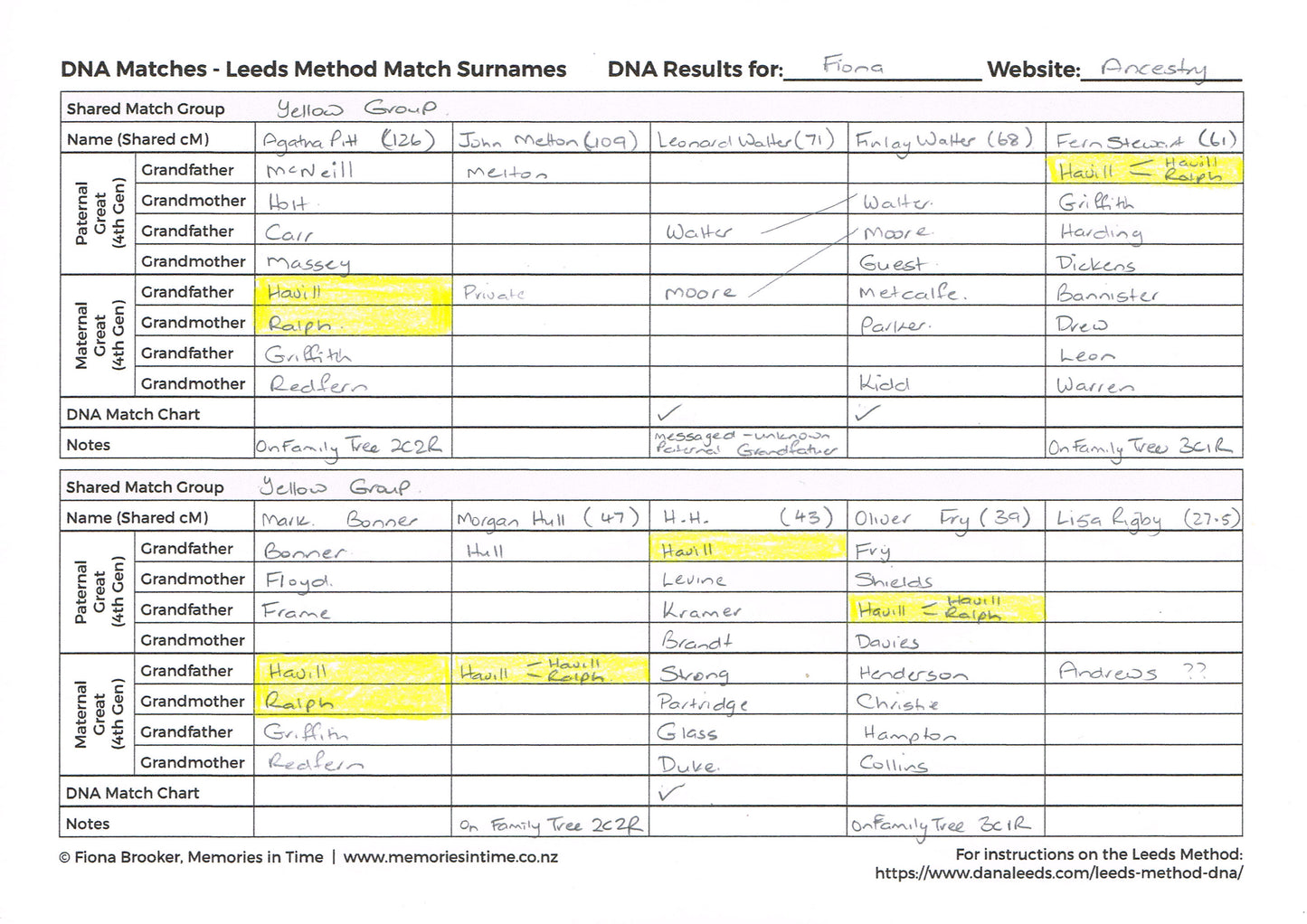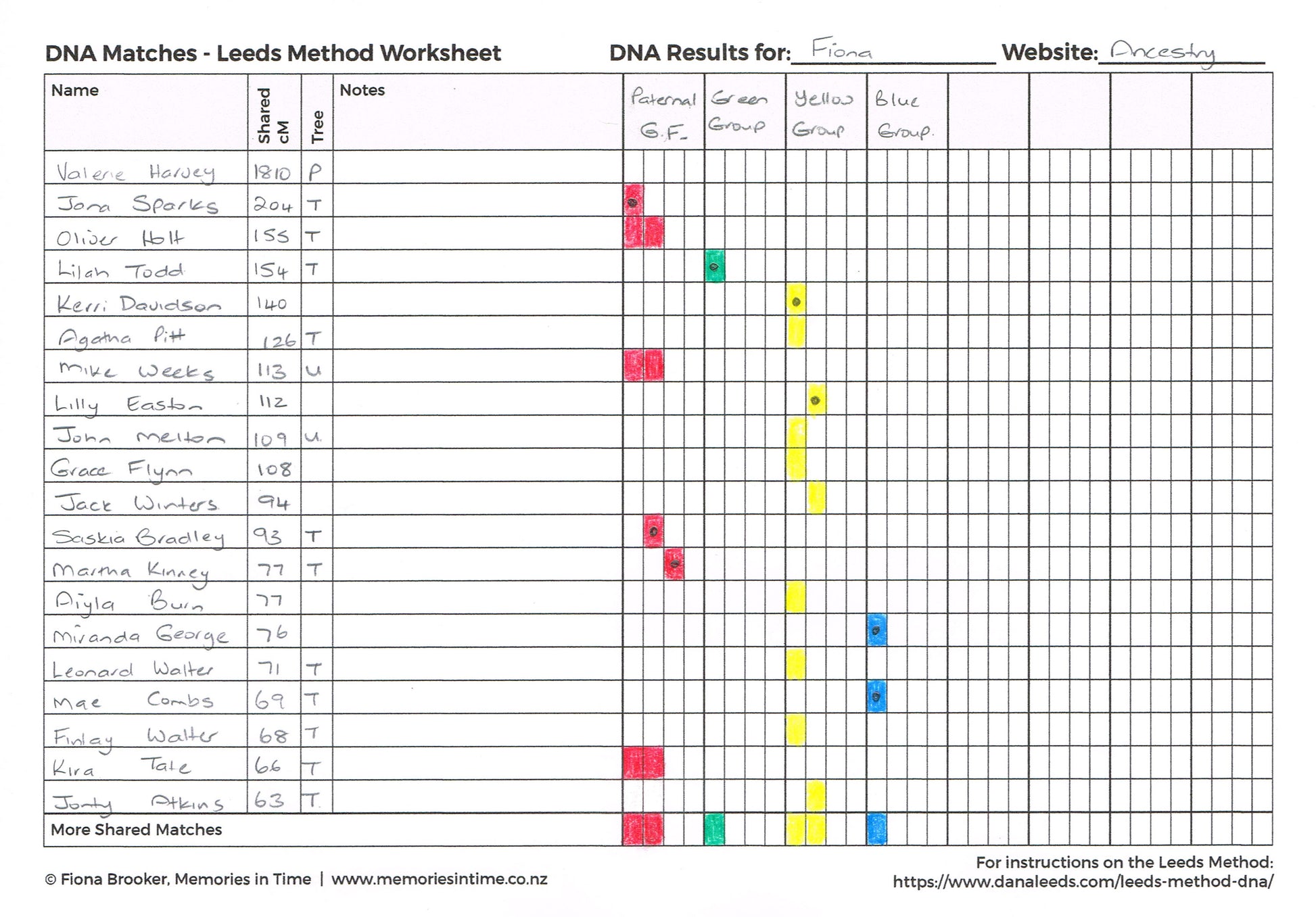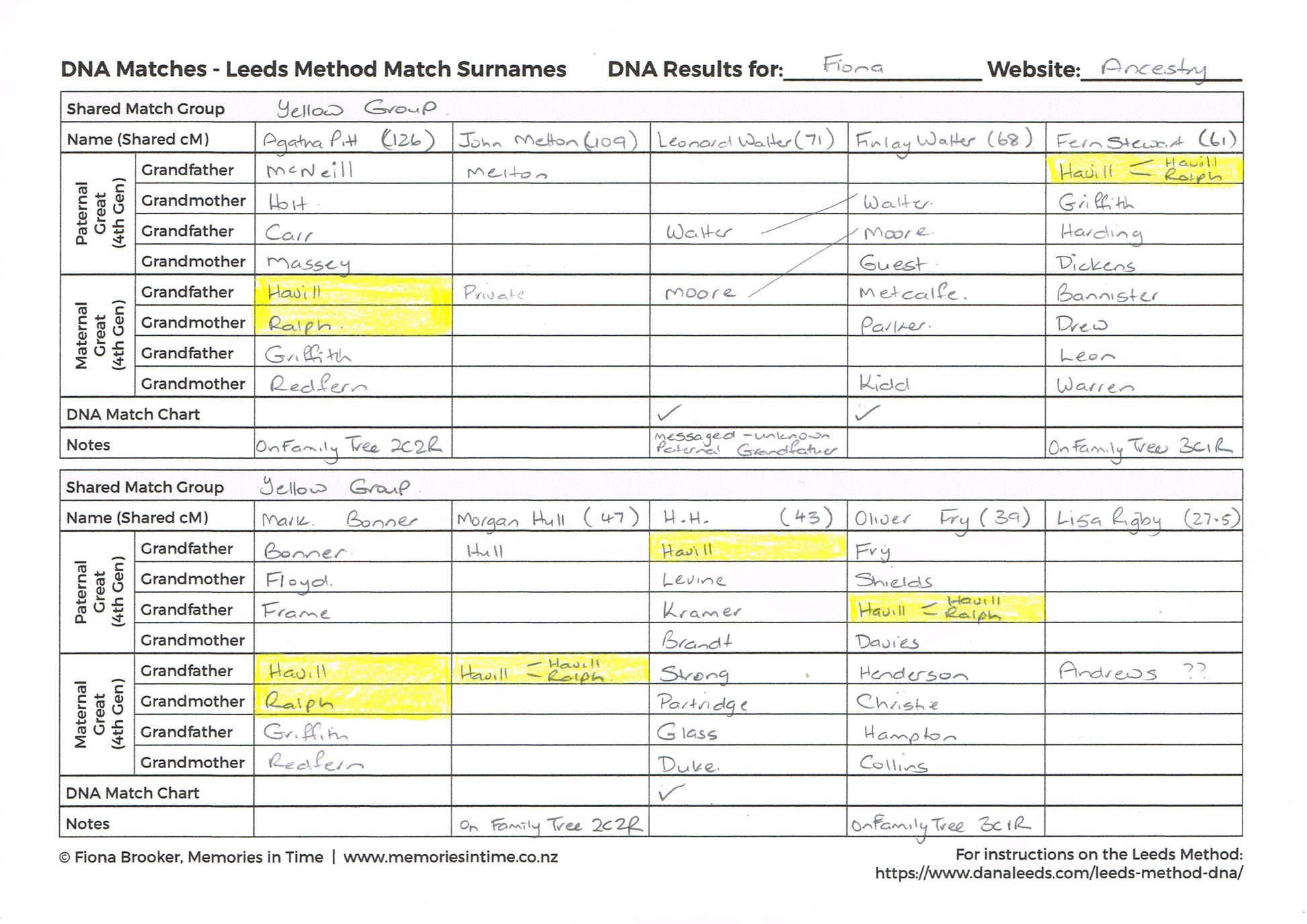Memories In Time
DNA Match - Leeds Method Worksheet
DNA Match - Leeds Method Worksheet
Couldn't load pickup availability
You've taken a DNA test and now it's time to work out who's related to who.
The Leeds Method is a great way of clustering your matches together to see groups of matches that may indicate your grandparents or great grandparents lines. You can read more about the method on Dana Leeds' website: www.danaleeds.com/leeds-method-dna/
These worksheets have been developed for those that prefer to do things by hand, rather than use spreadsheets.
The DNA Matches - Leeds Method Worksheet comes in multiple sizes A4/Letter/Legal (20 matches) or A3/Ledger (50 matches). List your matches, Shared cM and if they have a tree, then the fun begins as you colour in your shared matches.
The DNA Matches - Leeds Method Match Surnames Worksheet comes in A4/Letter/Legal size and allows you to focus on a group of matches and explore the shared surnames at the great grandparent (4th generation) level.
We have two blog posts showing how we completed the charts. Find Part 1 here and Part 2 here.
If you're a worksheet sort of person, have a look at our downloadable DNA Match Chart, it's perfect for building matches family trees to try and work our how you're related (and it keeps you organised). Print as many as you need for your own use and then use multiple charts for groups of shared matches. Spread them out and look for similarities in family trees. Solve those mysteries.
Completed samples do not use real names for DNA Matches.
Do you want some help understanding your DNA Matches?
Why not book a Understand Your DNA Results Workshop.
Share
Download Instructions
Download Instructions
My digital products have an immediate download option once you purchase, but I also send you an email with a link to the downloads.
Downloads that are large or have multiple items in them will come as a Zip File. This allows me to send you one file or folder with everything you need in it.
When you download the files, these will either save to your Download folder on your computer or you may be given the choice of choosing where you download the files to (find out how to do this if you are using Google Chrome here). The main thing is to remember where you have saved them, so that you can find them again.
If your download is a Zip file then you next need to unzip it. On a PC you can right click on the file/folder name and choose "Extract All". This will then create an unzipped folder with the same name. On a Mac you can double-click on the .zip file to expand it. Once the file is unzipped you can then use it like any other file on your computer.


Subscribe to our emails
I love sending you news and tips that can help with your research and sharing family history.


